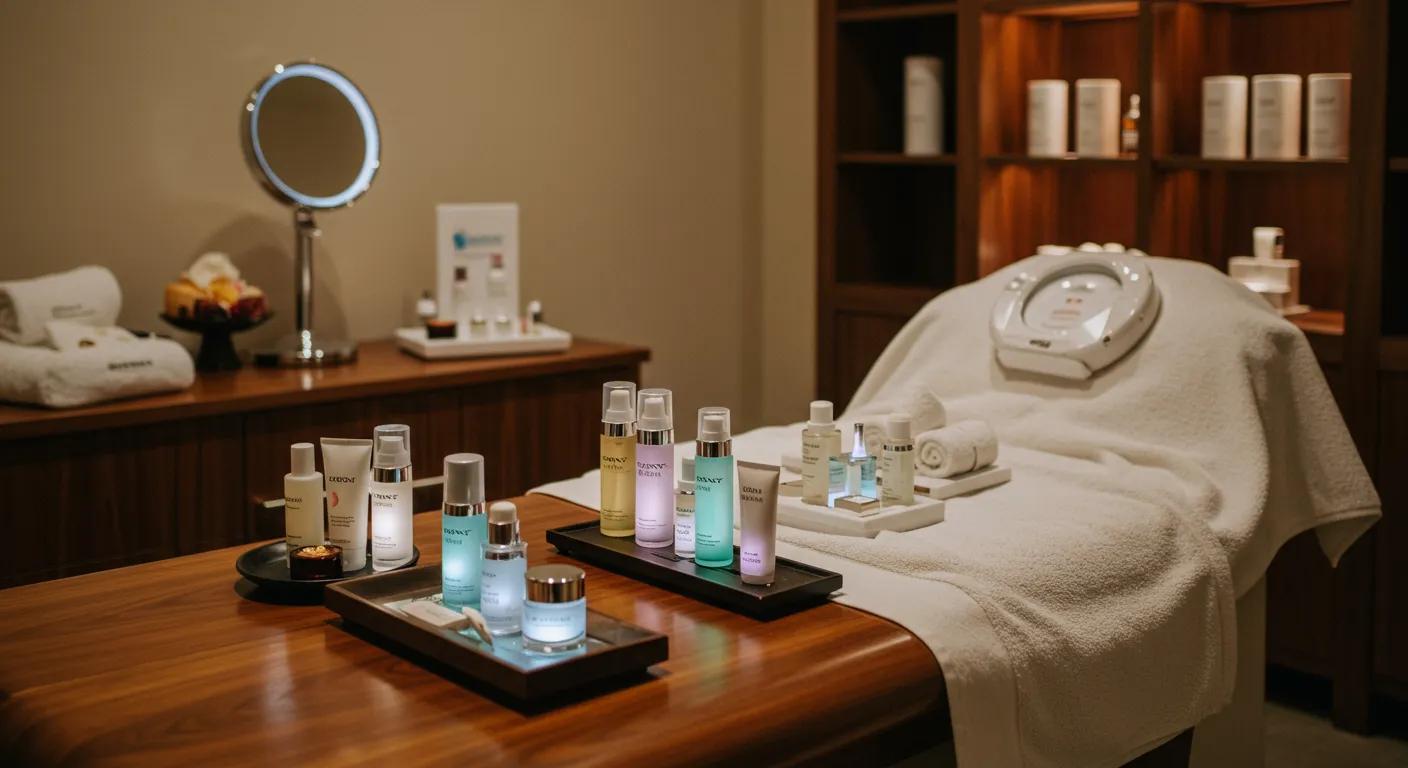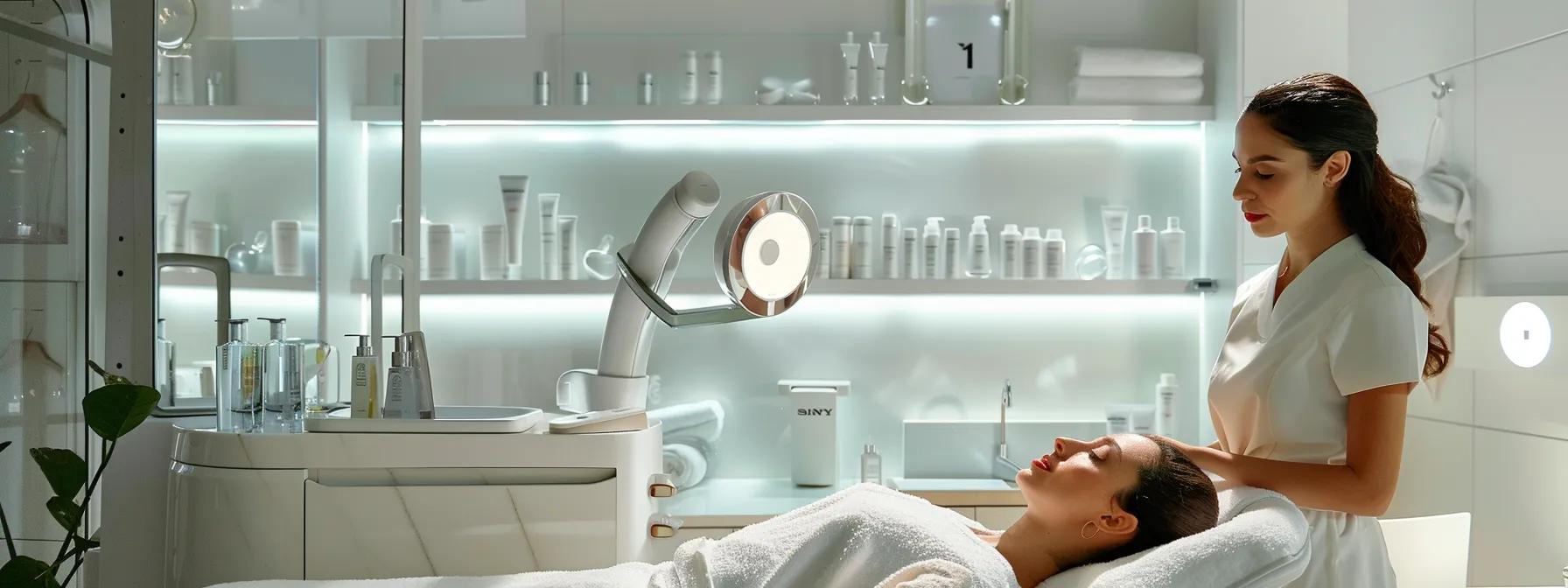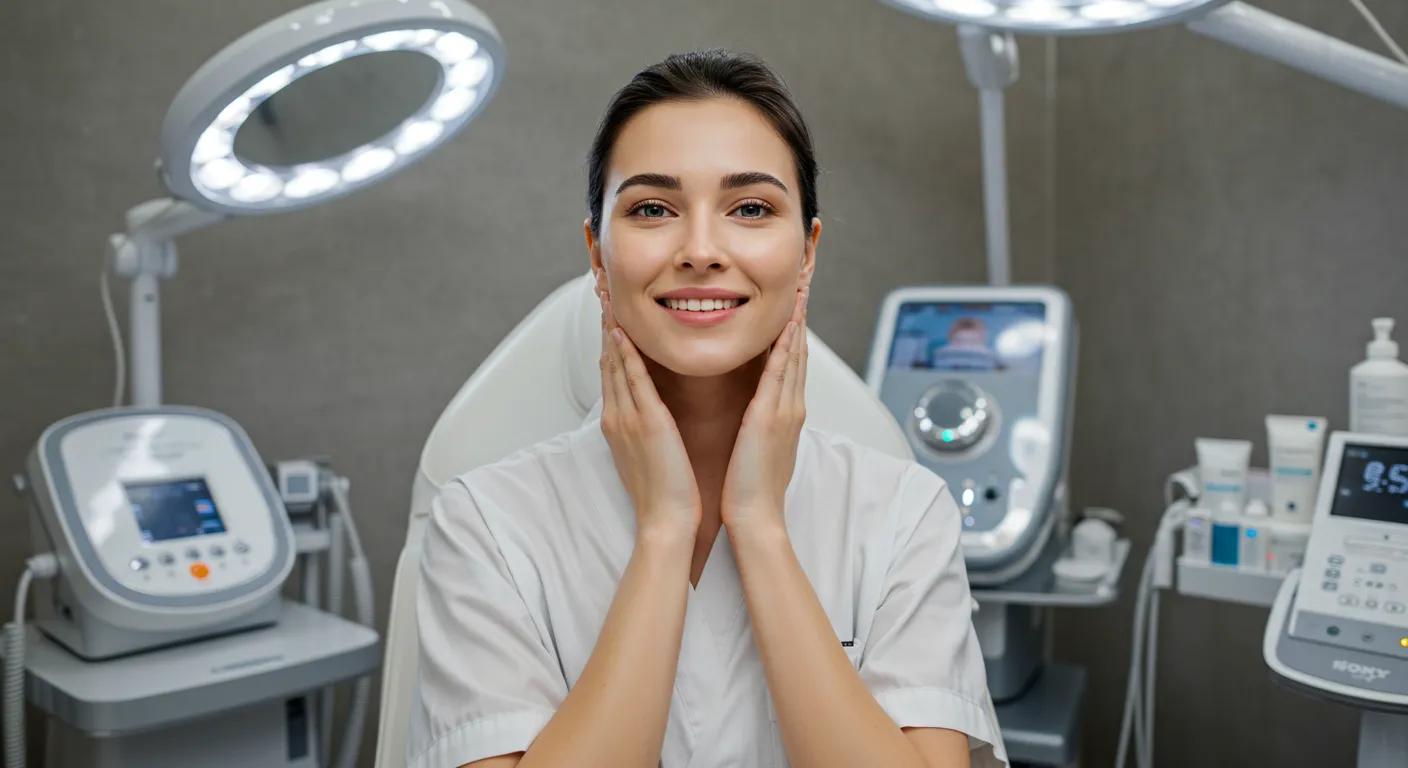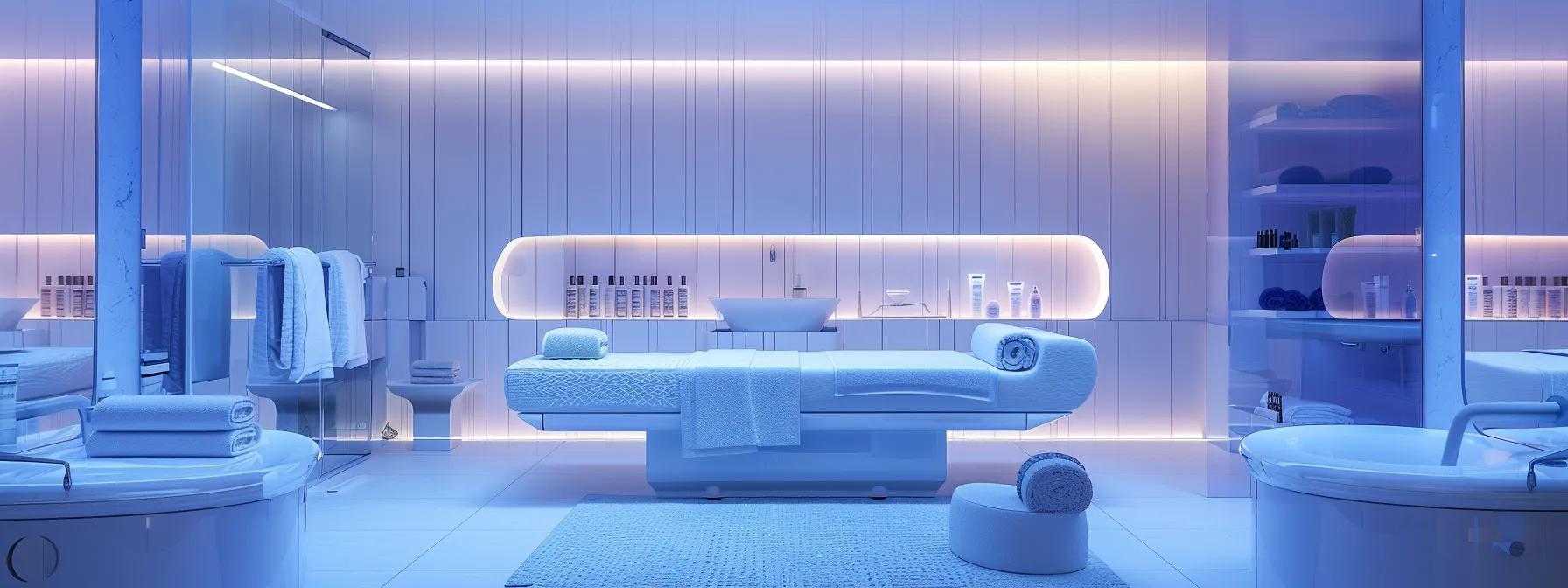
Facials: What Are They, and What Do They Really Do?
Facials are professional skincare treatments that aim to enhance the health and appearance of the skin. They address a range of issues—from hydration and exfoliation to skin clarity and rejuvenation. Professional facials involve specialized techniques and products applied by experienced aestheticians to improve skin texture, reduce signs of ageing, and boost radiance. This article explains what constitutes a professional facial treatment, the tangible results they offer, and various treatment options available, ensuring women understand how facials can help them achieve healthier skin.
Key Takeaways
- Facials use advanced skincare methods to enhance skin health and appearance.
- They offer immediate visible changes as well as long-term improvements.
- Different facial types target issues like ageing, acne, and dehydration.
- A thorough consultation and proper aftercare maximize the benefits.
Defining the Essence of a Facial Treatment

A professional facial treatment is a comprehensive skincare service performed by licensed estheticians. What constitutes a professional facial treatment? It involves deep cleansing, exfoliation, extraction, massage, and the application of tailored products like serums and masks. The process generally begins with a skin analysis to determine the client’s skin type and issues, followed by a customized treatment plan.
What Constitutes a Professional Facial Treatment
A professional treatment differs from at-home routines by using high-quality products and specialized techniques. It employs tools such as steam machines and brushes that are difficult to replicate at home. The treatment can help reduce signs of ageing, improve skin moisture, boost collagen production, and deliver a visible glow. Scientific formulations, including enzyme treatments and chemical peels, are often integrated to enhance skin renewal.
Typical Stages Involved in a Facial Treatment
Facials typically progress through several stages: cleansing, exfoliation, extraction (if necessary), massage, and a mask. Each stage is designed to remove impurities, stimulate circulation, and hydrate the skin. The process also often includes the use of serums with active ingredients like vitamin C and hyaluronic acid, which are essential for maintaining elasticity and reducing fine lines.
Distinguishing Facial Treatments From Daily Skincare Routines
Professional treatments provide a level of efficacy not achievable with daily routines. Whereas everyday skincare typically centers on simple cleansing and moisturizing, facials combine advanced techniques that work on deeper layers of the skin. This comprehensive approach can help reduce inflammation and treat conditions like acne or hyperpigmentation more effectively.
Real Results Facial Treatments Deliver to Your Skin

Facial treatments yield observable changes almost immediately. What skin improvements can clients expect? After a facial, many experience a reduction in congestion and an enhanced skin glow. With consistent treatments, long-term improvements include reduced fine lines, increased hydration, and a more even complexion.
Observable Skin Changes Immediately Following a Facial Treatment
Immediately following a session, the skin often appears smoother and more vibrant. Exfoliation removes dead cells, allowing the skin to better absorb beneficial ingredients. Clients frequently notice a reduction in redness and visible shrinkage of pores due to enhanced hydration and blood circulation.
Sustained Skin Improvements With Consistent Facial Treatments
When facials are done regularly, the skin can maintain higher levels of moisture and improved firmness. Consistent treatments help regulate oil production and reduce the frequency of acne breakouts. Additionally, long-term sessions aid in diminishing the appearance of wrinkles and hyperpigmentation by promoting cellular renewal.
How Facial Treatments Address Specific Skin Issues
Facials are versatile and can be tailored to tackle specific problems such as acne, rosacea, dryness, or signs of ageing. Estheticians customize each treatment according to the client’s skin condition using targeted products and procedures like light therapy or chemical peels. This personalization ensures that each session contributes directly toward managing and improving skin concerns.
Realistic Outcomes Expected From a Facial Treatment
While facials can significantly improve skin appearance, realistic expectations are essential. Clients may notice immediate improvements, yet sustained benefits require regular maintenance sessions coupled with proper at-home care. Outcomes may vary based on individual skin type and underlying conditions, but most report healthier, more radiant skin over time.
A Look at Various Facial Treatment Options

There are several types of facial treatments available today, each designed to address different skin concerns. What are the common facial options? Options include standard cleansing and revitalizing facials, age-management treatments, acne-targeted facials, deeply moisturizing facials, and soothing treatments for sensitive or reactive skin. Each treatment employs a unique combination of techniques and ingredients.
Standard Cleansing and Revitalizing Facial Treatments
These facials primarily focus on deep cleansing and exfoliation. They remove impurities and dead skin cells, leaving the skin looking refreshed. Revitalizing treatments typically include gentle extractions and a light massage, which enhances circulation and gives an immediate glow.
Age-Management Facial Treatments and Their Components
Age-management facials incorporate advanced ingredients like antioxidants, hyaluronic acid, and retinol. They are designed to boost collagen production, reduce fine lines, and improve skin firmness. These treatments often use light or chemical therapies to combat the visible signs of ageing for smoother, rejuvenated skin.
Facial Treatments Designed for Acne-Prone Skin
Acne-focused facials employ salicylic acid, exfoliating enzymes, and deep cleansing methods to unclog pores and reduce breakouts. They are customized to lower inflammation and clear oil build-up, fostering a clearer complexion while soothing irritated skin.
Deeply Moisturizing Facial Treatments for Parched Skin
For very dry or dehydrated skin, moisturizing facials are infused with rich emollients and peptides. These treatments aggressively hydrate the skin and lock in moisture, creating a plumper, more supple appearance essential for maintaining elasticity.
Soothing Facial Treatments for Reactive Skin
Sensitive or reactive skin benefits from gentle, calming procedures that avoid harsh chemicals. These treatments use ingredients such as aloe vera and chamomile to reduce redness and irritation while restoring the skin’s natural barrier for a balanced, comfortable feel.
Your Experience During a Professional Facial Treatment

A professional facial treatment is not only about the physical benefits but also the relaxing experience. What happens during a typical session? The process begins with a skin assessment, followed by a personalized dialogue between the client and the esthetician. This ensures that any sensitive areas or concerns are addressed.
The Initial Skin Assessment and Dialogue
During the consultation, the esthetician makes note of the client’s skin type, issues, and history. This dialogue is vital for tailoring the treatment effectively. Clients may discuss past irritation or sensitivity, ensuring the products and procedures used are suitable for their specific needs.
What You Might Feel Throughout the Facial Treatment
While undergoing a facial, clients can expect a mix of sensations—from the warming comfort of steam to the gentle pressure of massage. Light exfoliation or extractions may cause mild tingling, but overall, the experience is designed to be calming and nurturing, promoting both physical and emotional relaxation.
The Esthetician’s Function During Your Facial Treatment
The esthetician plays a crucial role by guiding the treatment process and adjusting techniques based on the client’s responses. They monitor the skin’s reaction throughout and ensure that the procedure remains safe and effective. Their expertise makes the treatment both a therapeutic and aesthetic experience.
Typical Setting and Timeframe for a Facial Treatment
Facial treatments are usually performed in tranquil spa environments designed to relax the client. Sessions typically last between 60 and 90 minutes, allowing sufficient time for a thorough cleansing, treatment, and the application of hydrating and protective products.
Getting the Most From Your Facial Treatment Experience

Maximizing the benefits of a facial goes beyond the in-spa treatment. How can clients enhance their results? Pre-treatment preparation and proper aftercare are essential for sustaining the improvements achieved during the session.
Skin Preparation Steps Before Your Facial Treatment
Prior to a facial, it is advisable to cleanse the face gently to remove surface impurities. Avoid heavy makeup and harsh scrubbing in the days leading up to the treatment. Adequate hydration and a balanced diet also help prepare the skin for optimal absorption of the treatments to follow.
Aftercare Practices for Prolonged Facial Treatment Effects
Post-treatment care is crucial for maintaining the skin’s rejuvenation. Estheticians often recommend using gentle cleansers, applying sunscreen, and investing in hydrating serums. Avoiding excessive sun exposure and following a tailored skincare routine helps prolong the benefits of the facial.
Determining an Optimal Schedule for Facial Treatments
For lasting results, facials are most effective when scheduled regularly. Many professionals suggest a monthly treatment, although clients with specific skin concerns might benefit from more frequent sessions. Discussing an optimal schedule with a skincare specialist will ensure treatments complement the client’s overall skincare regimen.
How Facial Treatments Complement Your Home Skincare
A professional facial can significantly boost the effectiveness of a daily skincare routine. When combined with quality home products such as enzyme cleansers and antioxidant serums, facials help maintain skin hydration, manage oil production, and reduce signs of ageing, ensuring a well-rounded approach to skin health.
Key Considerations for Any Facial Treatment

Choosing the right facial treatment is vital to achieving desired skin results. What factors should be considered? Facial treatment suitability, reaction risks, price ranges, and specific skin needs are all critical elements. A careful assessment helps ensure that the chosen treatment aligns with skin type and conditions.
Facial Treatment Suitability Across Different Skin Profiles
Not every facial is ideal for every skin type. Those with oily or acne-prone skin might benefit more from deep-cleansing and extraction facials, while mature or dry skin types favor hydrating and age-management treatments. A thorough skin consultation will help determine the most effective procedure.
Recognizing Possible Reactions After a Facial Treatment
Post-treatment reactions can include redness, slight irritation, or sensitivity. It is important for clients to be aware of what is normal and when to consult a professional. Mild discomfort is expected, but severe reactions should be addressed promptly to avoid complications.
General Price Ranges for Professional Facial Treatments
The cost of facials can vary widely based on location, type of treatment, and the salon’s reputation. Generally, prices range from modest to premium, reflecting the expertise and quality of the service provided. Clients should balance cost with the potential benefits and choose reputable providers.
Selecting an Appropriate Facial Treatment for You
Ultimately, the selection of a facial treatment should be based on individual skin needs and treatment goals. Clients must assess factors like existing skin conditions, desired outcomes, and the aftercare commitment required. Consulting with experienced estheticians can provide clarity on the best options for specific concerns.
Circumstances Where a Facial Treatment May Be Inadvisable
Certain skin conditions or sensitivity may render facials unsuitable. For instance, those with active infections or severe inflammation should avoid practitioners’ treatments until their skin is stabilized. Medical advice should be consulted to ensure any treatment will not cause further damage.
Final Thoughts
Facial treatments offer a range of benefits, from immediate skin radiance to long-term improvements in skin health. By understanding the different types of facials and preparing both before and after the treatment, clients can maximize results. Choosing the right treatment based on individual skin type and needs is essential for achieving desired outcomes. Overall, professional facials are a valuable investment in one’s skincare routine, delivering both aesthetic and therapeutic benefits.
Frequently Asked Questions
Q: What is the main purpose of a facial treatment?
A: A facial aims to cleanse, exfoliate, and rejuvenate the skin while addressing specific concerns such as ageing or acne through customized techniques and high-quality products.
Q: How often should one get a facial treatment?
A: It is generally recommended to have a facial at least once a month; however, individual skin needs may dictate more frequent sessions.
Q: Are facials safe for sensitive skin?
A: Yes, but sensitive skin should opt for soothing facials with gentle ingredients. A proper consultation with an esthetician ensures the treatment is tailored to avoid irritation.
Q: Can facials replace daily skincare routines?
A: Facials complement daily skincare routines; they do not replace them. Consistent home care alongside professional treatments produces the best long-term skin health.
Q: What should be done after a facial treatment?
A: After a facial, it’s important to follow a gentle skincare regimen, keep the skin hydrated, and apply sunscreen to protect the newly treated skin.
